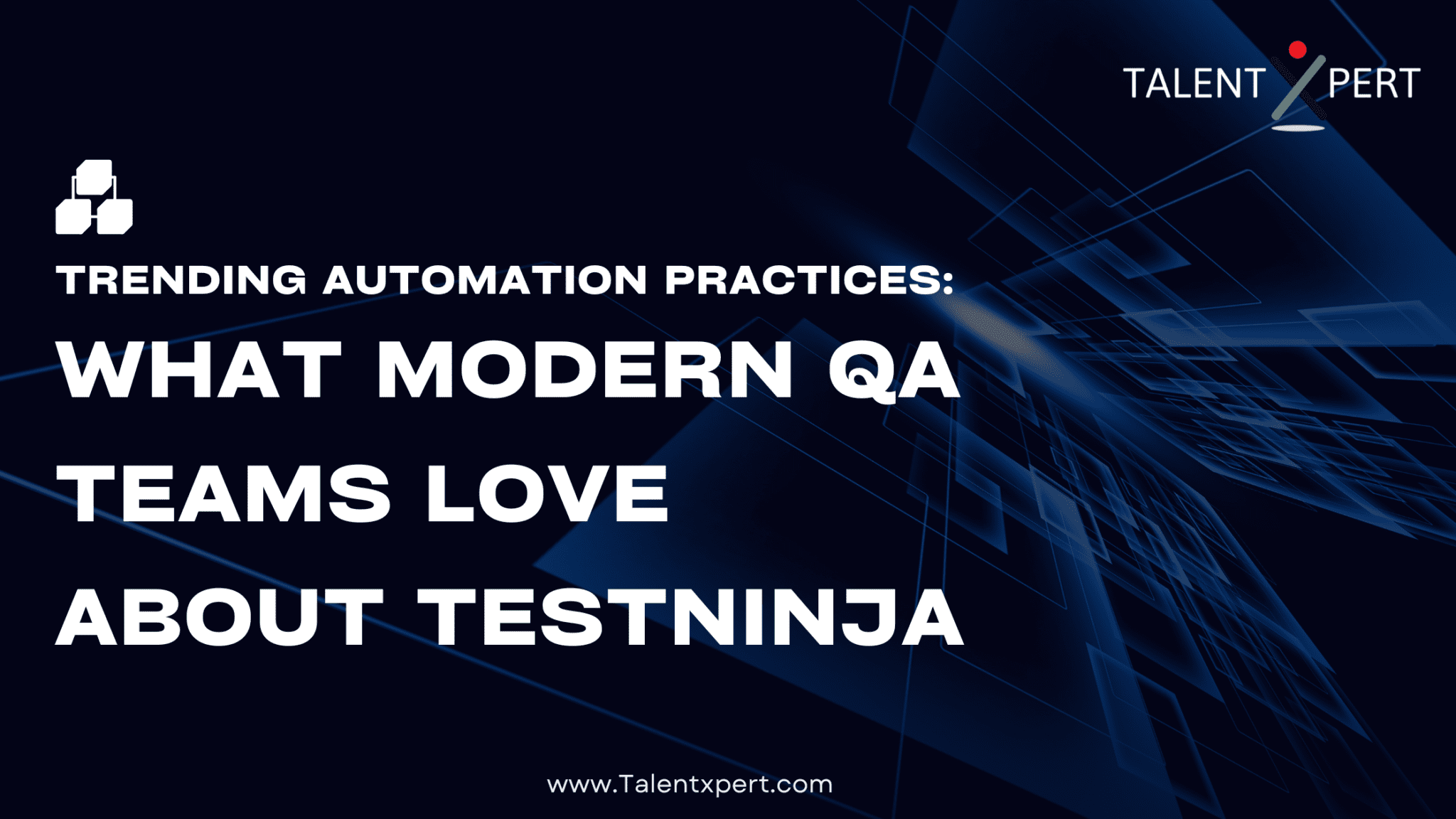Trending Automation Practices: What Modern QA Teams Love About TestNinja
Quality assurance has moved beyond being a supportive function. In today’s software-driven world, QA teams are at the core of delivering reliable digital experiences. Yet, the speed of modern development demands smarter practices and tools. As a result, traditional testing methods often fail to keep pace. This is where the TestNinja automation tool makes a difference, helping QA professionals adopt practices that match the demands of 2025.
Let’s uncover the trending automation practices that QA teams are embracing—and why TestNinja is their favorite platform for implementation.

1. Shift-Left Testing for Early Detection
One of the most influential practices today is shift-left testing. Instead of waiting until later phases, QA now starts much earlier in the development cycle. Because of this, bugs are discovered sooner, saving time and effort downstream.
TestNinja supports this approach by integrating seamlessly with development workflows. For instance, automated tests can run right after code commits, ensuring issues are flagged before they escalate. Consequently, QA engineers collaborate closely with developers, fostering a culture of shared responsibility for quality.
2. Continuous Testing in CI/CD Pipelines
With DevOps driving frequent releases, continuous testing is no longer optional. QA teams now require automation that keeps pace with continuous integration and deployment cycles.
Here, TestNinja excels. The tool runs parallel tests across multiple environments, ensuring immediate feedback after every deployment. Moreover, automated reporting helps teams instantly evaluate quality, reducing release risks. As a result, businesses can ship features faster without sacrificing reliability.
3. Codeless Automation for Wider Adoption
Another growing trend is codeless automation. Many organizations struggle with limited automation engineers, which slows testing adoption. However, TestNinja removes this barrier by offering an intuitive, drag-and-drop interface.
This means manual testers, business analysts, and even product managers can participate in automation. Furthermore, reusable test components make scaling easier, since teams don’t need to reinvent tests for similar scenarios. Thus, codeless capabilities expand automation coverage across projects.
4. Smart Test Maintenance with AI
Modern applications evolve quickly, which often breaks traditional automation scripts. Maintaining those scripts consumes valuable time. That’s why QA teams now prioritize AI-driven solutions for smarter test maintenance.
TestNinja’s self-healing technology automatically adapts to changes in UI elements or workflows. Consequently, teams spend less time fixing scripts and more time creating meaningful test coverage. This trend is vital for organizations that release frequent product updates.
5. Broader Test Coverage Through Cloud Execution
Today’s digital products must work flawlessly across browsers, devices, and operating systems. Therefore, QA teams rely heavily on cloud-based testing to achieve wide coverage.
TestNinja makes this effortless by providing scalable cloud infrastructure. As a result, tests can run on diverse environments simultaneously, ensuring users experience consistent performance everywhere. Additionally, teams avoid the cost of maintaining local infrastructure, making the approach both efficient and economical.
6. Data-Driven Testing for Realistic Scenarios
Another practice gaining traction is data-driven testing. QA engineers now use multiple data sets to validate how applications behave under different inputs. This is particularly important in sectors like finance, healthcare, and e-commerce.
TestNinja simplifies data-driven automation by allowing teams to plug in test data easily. Moreover, it integrates with external data sources, enabling comprehensive scenario coverage. Therefore, businesses gain confidence that their applications will perform correctly across diverse conditions.
7. Collaboration and Transparency in QA
Modern QA teams don’t work in silos anymore. Collaboration and visibility are essential, especially in agile organizations. As a result, tools that support transparency are highly valued.
TestNinja enhances collaboration with centralized dashboards and real-time reporting. Everyone—from QA engineers to business leaders—can access insights instantly. This ensures informed decision-making, reduces miscommunication, and builds trust across teams.
8. Prioritizing Speed Without Sacrificing Quality
Finally, QA teams are adopting practices that balance speed with quality. In competitive markets, rushing features without reliable testing can damage user trust. On the other hand, delaying releases for manual testing slows innovation.
TestNinja solves this by accelerating regression, functional, and end-to-end testing. Additionally, its parallel execution capabilities allow faster test cycles, enabling businesses to achieve both speed and accuracy simultaneously.
Why TestNinja is the Best Automation Testing Tool for Web Apps
TestNinja offers everything a QA team needs to automate web application testing effectively. From cross-browser testing to AI-driven maintenance, its features simplify automation, improve accuracy, and save valuable time.
Who Should Use TestNinja?
✔ Startups: Automate testing without hiring specialized engineers.
✔ Agile Teams: Speed up sprints with faster testing cycles.
✔ Enterprise QA Teams: Scale testing operations efficiently.
✔ Non-Technical Users: Enable manual testers to automate without coding.
Conclusion
The QA landscape in 2025 is defined by innovation, speed, and inclusivity. Practices such as shift-left testing, codeless automation, AI-driven maintenance, and cloud execution are shaping modern workflows. Notably, the TestNinja automation tool empowers teams to adopt all of these practices with ease.
By enabling faster execution, broader collaboration, and smarter test maintenance, TestNinja is more than just a testing solution. It’s a platform that supports QA teams in delivering reliable, high-quality products at the pace of modern development.
As automation practices continue to evolve, one thing is clear: TestNinja is not simply following the trends—it’s leading them.


